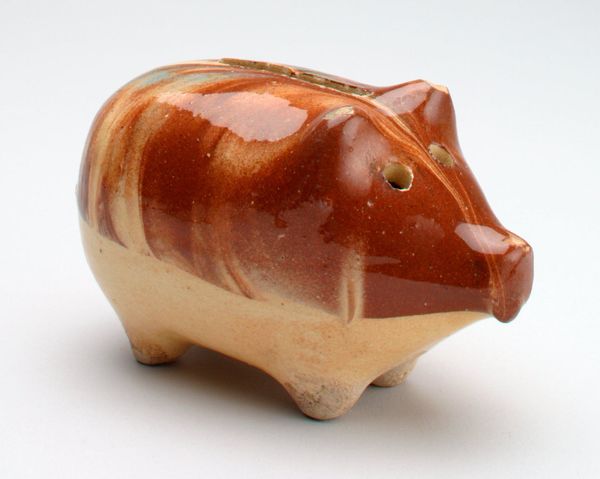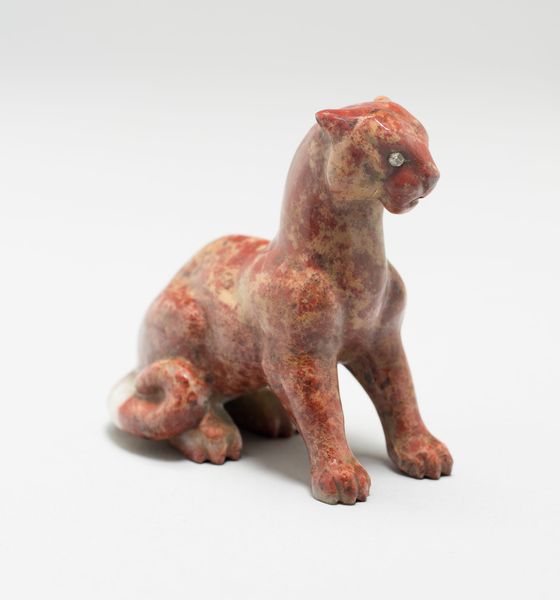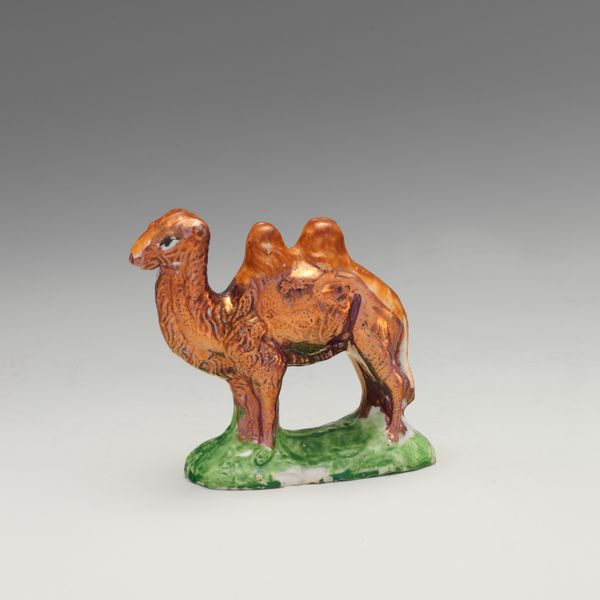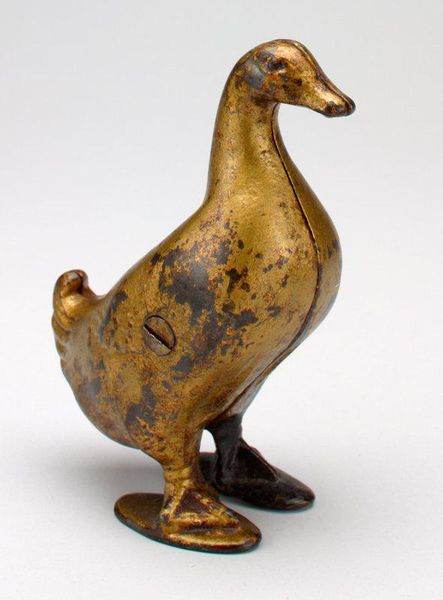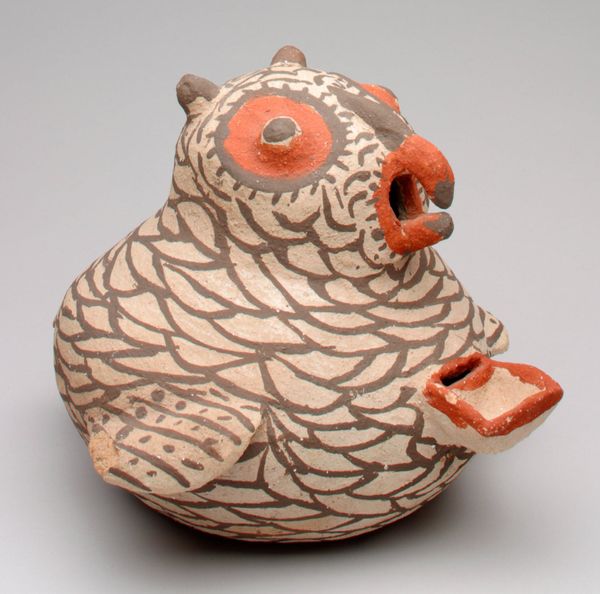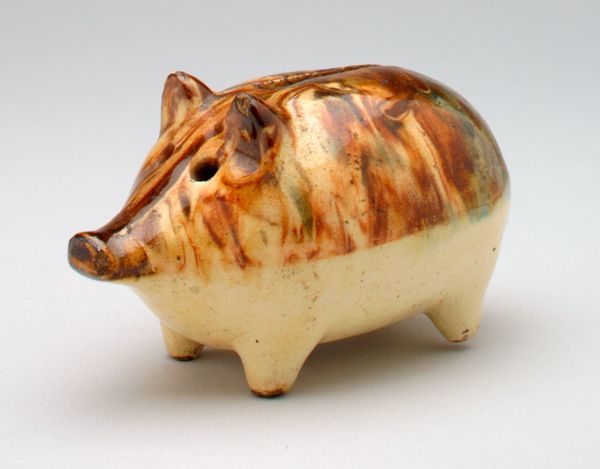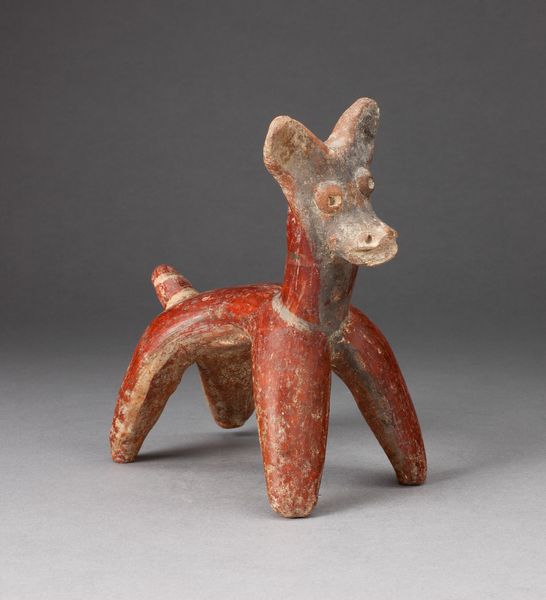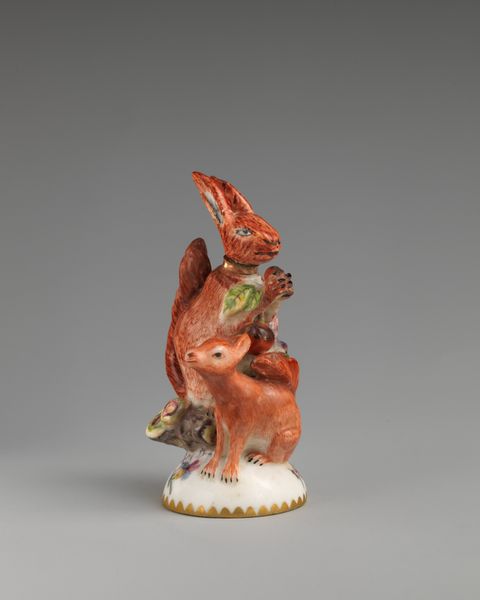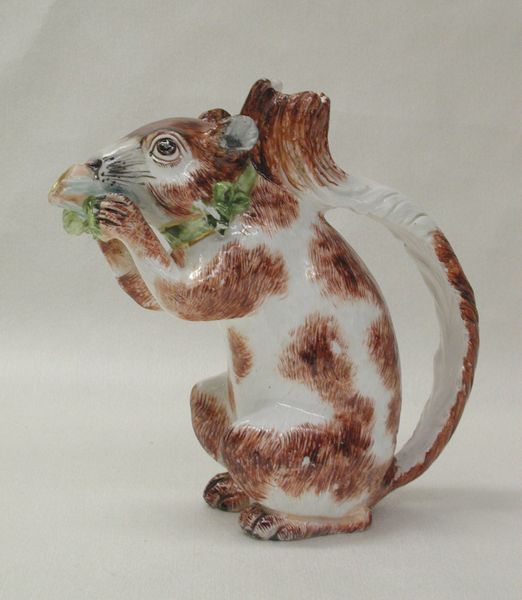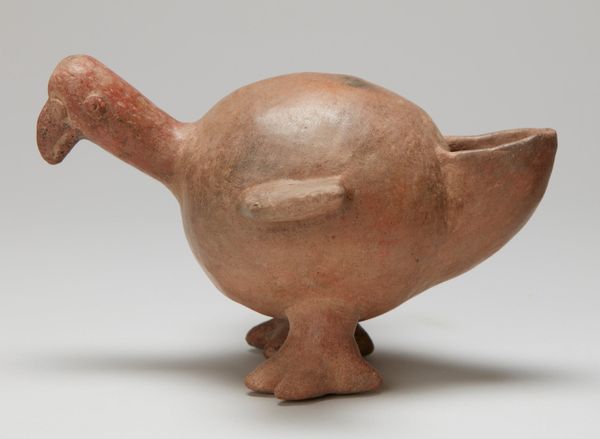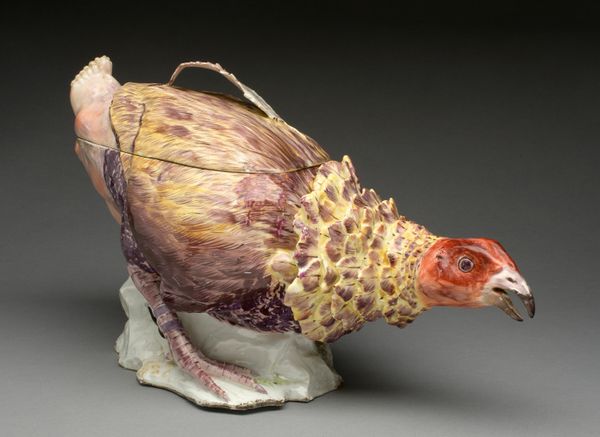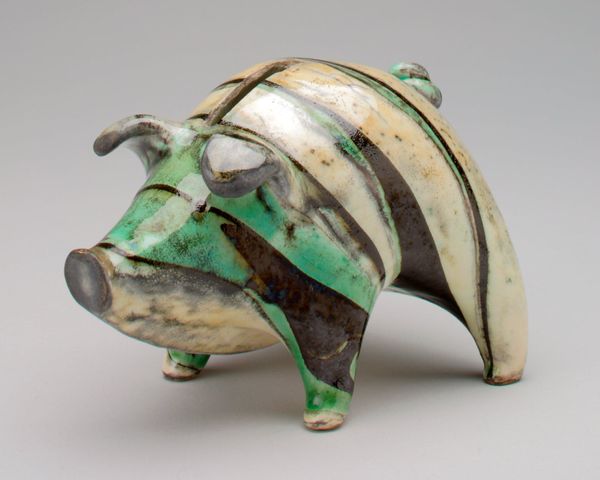
ceramic, earthenware, sculpture, terracotta
#
ceramic
#
figuration
#
earthenware
#
sculpture
#
terracotta
#
indigenous-americas
Copyright: Public Domain
Editor: Here we have a ceramic sculpture titled "Parrot" dating from around 1 to 500 AD, crafted by the Nayarit people. It’s small and striking with that red slip. What really jumps out at me is its stylized, almost whimsical form. How do you interpret this work? Curator: Well, immediately, the symbolic importance of the parrot resonates. Parrots, especially in ancient cultures across the Americas, often represented a connection to the divine. Their bright plumage and vocal abilities linked them to both the sun and communication between worlds. This earthenware figure, in its simplification, carries that weight of meaning. Does the form itself suggest anything to you about its purpose? Editor: I guess, being somewhat round and bottom heavy, it could be ceremonial or funerary? I'm really unsure. Curator: Precisely! Many Nayarit ceramic figures, including animals, were found in shaft tombs. Considering the beliefs about the afterlife in these cultures, do you think the parrot's symbolism might be amplified in such a context? What associations do you have with parrots? Editor: Perhaps it’s guiding souls on their journey or acting as a messenger between the living and the dead. Curator: Indeed. Its presence would not simply be decorative; the parrot, as a symbol, would imbue the tomb with spiritual power and purpose. It is fascinating to consider how, through visual imagery, this simple form served to ensure a potent connection to ancestral memory and to the cosmos. Editor: I hadn't considered the layers of symbolism within something seemingly so simple. Thanks so much! Curator: My pleasure; contemplating such imagery reveals just how powerful those connections are across time.
Comments
No comments
Be the first to comment and join the conversation on the ultimate creative platform.
